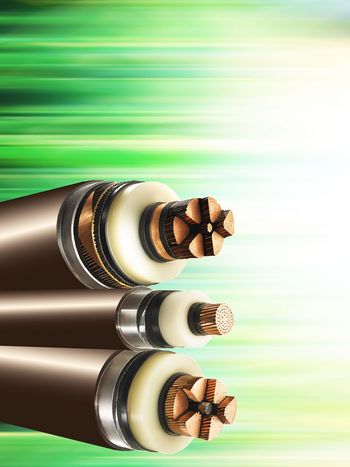Overhead Lines
By Herbert Lugschitz, Chair & Wolfgang Troppauer, Secretary
Study Committee B2 covers the design, construction and operation of overhead lines. This includes the mechanical and electrical design and experimental validation of new line components (e.g. conductors, ground wires, insulators, accessories, structures and their foundations), the study of in-service line performance and assessment of aged line components, line maintenance, the refurbishment and life extension as well as upgrading and uprating of existing overhead lines.
Overhead lines play an important role for the Power System of the Future and its challenges. The activities of SC B2 are full in line with this important aspect of CIGRE´s mission.
The Technical Direction of SC B2 is:
- Increase the ampacity of existing lines
- Ensure reliable lines, or establish / improve the reliability of existing lines
- Ensure environmentally compatible lines
- Assessment of lines, methods, new tools
SC B2 cooperates with SCs B1 “Insulated Cables” and C3 “Power system environmental performance”. This cooperation has the main goal to inform about actual developments and tendencies in the neighbouring SCs.
The principal areas of interest of B2 are:
- Route selection
- Optimized line design
- Line maintenance & service
- Refurbishment of existing lines
- Design specifications
- Increased power flow of existing lines
- Asset management guidelines
- Real-time monitoring systems
- New materials
- Sustainability of line components
- Minimizing the environmental impact of lines
Meetings, Sessions
Due to the Covid pandemic mainly video meetings took place. Nevertheless 2021 had two highlights, the Centennial e-session in August in Paris and the hybrid-Symposium in November in Ljubljana in Slovenia. Despite this new and challenging approaches the events could be realized very well without noteworthy problems. The efforts to organize these were much more than for classic face to face meetings
Centennial e-session Paris 2021
The 2021 CIGRE Centennial Session was a virtual session following the Special Reporter System. This was different from the e-session 2020 where full papers were presented.
The GDM had a total of 8 hours of discussion on two days. Live spontaneous contributions were also possible and could be posted on KMS, by chat or by e-mail. Answers were given verbally by the presenters. We had 52 selected full papers, and two live presentations from the “CIGRE Next Generation Network NGN” from Japan and Ireland which triggered interesting discussions.
The three preferential subjects:
- PS1: condition-based maintenance for increased sustainability
- PS2: enhancing overhead line performance
- PS3: resources and design considerations
led to contributions and discussions about:
- CONDUCTORS: new materials, experience, anti-ice and anti-noise coatings, tests
- TOWERS: tubular steel towers for 765kV, corrosion protection, use of robots, tower tests
- INSULATORS: applications and tests of composite insulators
- ARTIFICIAL INTELLIGENCE AI: for tower check/maintenance, risks from OHL near houses, AI in several other applications
- ENVIRONMENTAL ASPECTS: both – from OHL to the environment and from the environment to OHL
It was a technically very interesting and future-oriented session with 255 registered and 170 attending person (on both days). Japan had the most nominations, followed by France and Germany. B2 had 26 prepared contributions (50% from Japan, others from FR, BE, CH, CA, HU, IN, RU, NOR, BR).
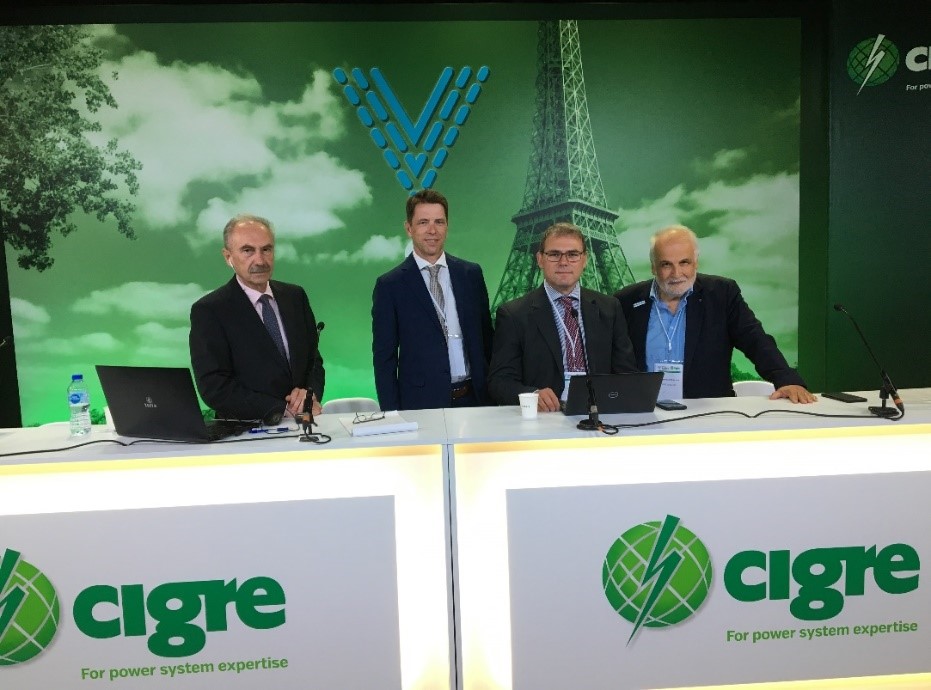
Picture 1 shows the SC Chair H. Lugschitz, SC Secretary W. Troppauer, invited presenters K. Reich and K. Papailiou (from left) at the video studio at the Palais de Congrès in Paris during the Group Discussion Meeting
Three invited presentations informed about
- “Back to the future: The resurrection of Overhead Lines” by Mr. Papailiou (CH)
- “Technical Advisory Groups TAGs in SC B2” by Mr. Iglesias (ES), Mr. da Silva (BR), Mr. van Dyke (CA), Mr. McCormack (AU)
- “SEERC: South East European Regional Council of CIGRE and its history”, by Mr. Reich (AT)
The 2021 B2 Annual Meeting (Technical and Administrative meeting) was held at the occasion of the Paris Session.
Symposium “Reshaping the Electric Power System Infrastructure” in Ljubljana, Slovenia
The symposium took place from 20th to 24th November as a hybrid event. Ten SCs contributed. 190 persons from 30 countries registered (Africa 1, America 3, Asia 6, Australia 1, Europe 18). 90 of them attended in Ljubljana.
B2 had 15 presentations in 4 sessions plus 6 posters. They contributed as shown below and triggered lively and active discussions:
- Dynamic Line Rating to increase the capacity of existing lines, different systems and approaches
- Replacement strategy by statistics about age and history of conductors
- Check of quality of steel cores in ASCR conductors
- Inspection and Testing of Equipment and Training for Live-Line Work
- Transition of an AC line to DC line, increase of capacity
- Artificial Intelligence for maintenance of lines
- Comparison of clearances in standards and regulations in Japan and other countries
- Condition monitoring of lines by sensors
- Pollution of insulators and coordination of insulation
- Irrigation systems, vegetation encroachment
- Challenges from environmental influences on OHL
The National Committee enabled a perfect event under the given restrictions in the complicated pandemic environment. They also informed about the long and successful history of the country in the electricity business, and the tight cooperation with CIGRE over the years. We have to thank the organizers very much for that.
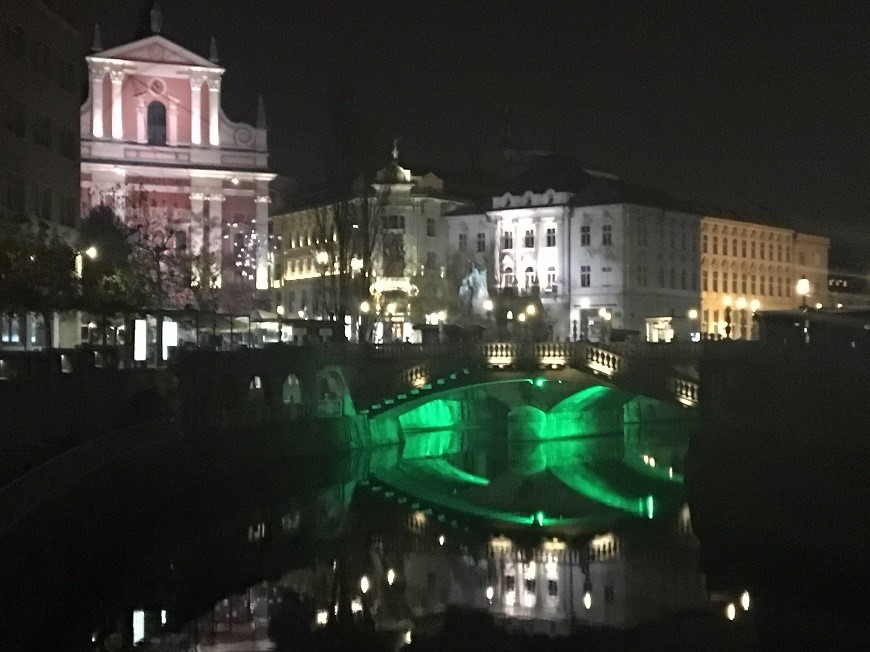
Picture 2 - Ljubljana in the colours of CIGRE
Structure of SC B2
B2 has Regular Members from 24 countries, 5 Regular Additional Members, Observers from 16 countries.
Seven Advisory Groups (AG) coordinate in the SC and among their assigned Working Groups. Members in our AGs come from all continents of the world. They represent and present different opinions, approaches, developments, solutions, forecasts, limitations, precautionary measures, policies, social environment, lessons learned, etc. This ensures a well balanced approach in the SC.
The AGs of B2 are:
- CAG Customer Advisory, Kjell Halsan (NO)
- PTAG Publication and Tutorial, Wolfgang Troppauer (AT)
- TAG 04 Electrical Aspects of Overhead Lines, Javier Iglesias (ES)
- TAG 05 Towers, Foundations and Insulators, João da Silva (BR)
- TAG 06 Mechanical Behaviour of Conductors and Fittings, Pierre Van Dyke (CA)
- TAG 07 Asset Management, Reliability and Availability of Overhead Lines, John McCormack (AU)
- SAG Strategic Advisory, Herbert Lugschitz (AT)
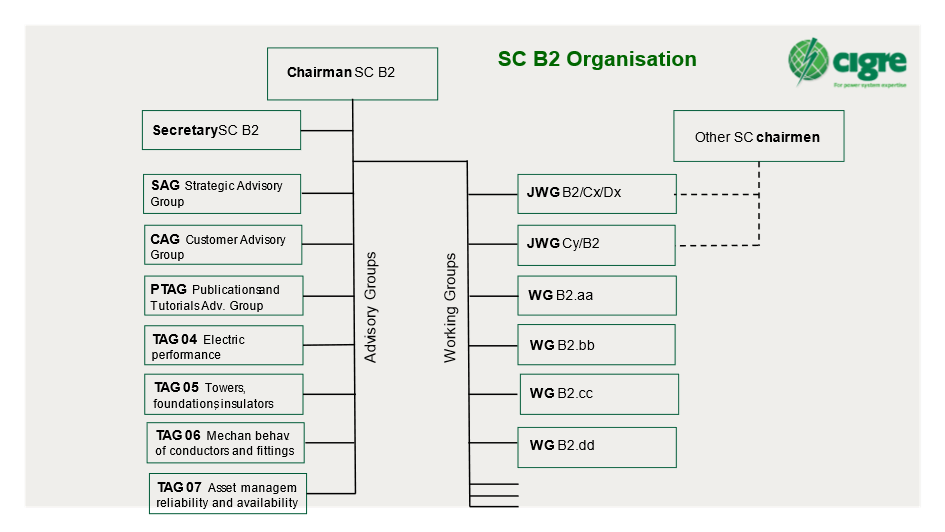
Picture 3 shows the structure of B2
Working Groups, Overview
At present B2 has 26 active Working Groups including three Joint Working Groups with other SCs. 600 experts contribute in WGs (excluding multiple memberships in different WGs), from 47 countries. B2 has app. 8 % female members in WGs and 14 “young members”.
The current WGs are:
- B2.50 Safe handling of fittings and conductors
- B2.57 Survey of Operational Composite Insulators Experience & Applications
- B2.59 Forecasting dynamic line ratings
- B2.60 Affordable Overhead Transmission Lines for Sub-Saharan Countries
- B2.65 Detection, Prevention and Repair of Sub surface Corrosion in Overhead Line Supports, Anchors and Foundations
- B2.66 Safe handling and installation guide for high temperature low sag (HTLS) conductors
- B2.67 Assessment and Testing of Wood and Alternative Material Type Poles
- B2.68 Sustainability of OHL conductors and fittings – Conductor condition assessment and life extension
- B2.70 Aircraft warning markers and bird flight diverters for Overhead Lines – Experience and recommendations
- B2.71 Recommendations for Interphase Spacers of Overhead Lines
- JWG B2/D2.72 Condition Monitoring and Remote Sensing of Overhead Lines (lead B2)
- B2.73 Guide for Prevention of Vegetation Fires Caused by Overhead Line Systems
- B2.74 Use of unmanned aerial vehicles (UAVs) for assistance with inspection of overhead power lines
- B2.75 Application guide for insulated and un-insulated conductors used on medium and low voltage overhead lines
- JWG B2/C4.76 Lightning & Grounding Considerations for Overhead Line Rebuilding and Refurbishing Projects, AC and DC, (lead B2)
- B2.77 Risk Management of Overhead Line networks: A model for identification, evaluation and mitigation of operational risks
- B2.78 Use of High Temperature Conductors in New Overhead Line Design
- B2.79 Enhancing Overhead Line Rating Prediction by Improving Weather Parameters Measurements
- B2.80 Numerical Simulation of electrical fields on AC and DC Overhead Line Insulator Strings
- B2.81 Increasing the Strength Capacity of Existing Overhead Transmission Line Structures
- B2.82 Overhead Line Foundations for Difficult Soil and Geological Conditions
- B2.83 Mitigation of induced noises by corona activity in overhead AC and DC lines
- B2.84 Assessment of the methodologies to analyze wind induced overhead line conductors motion: applications and limitations.
- B2.85 Emergency Restoration Systems for Overhead Lines - Guide for Design, Planning and Installation
- JWG B2/C1.86 Approach for Asset Management of Overhead Transmission Lines
- B2.87 Live line and vicinity working on overhead lines: Safe Management Guidelines
New Working Groups
The scope of work of new B2 Working Groups established 2021 and 2022 is explained hereafter.
B2.84 Assessment of the methodologies to analyze wind induced overhead line conductors motion: applications and limitations
Overhead transmission line design with respect to wind induced vibrations has been performed for a long time based on previous experience and simplified approaches. Then mathematical models to simulate the single and bundle conductors behavior when subjected to the different types of wind excitation (aeolian vibrations, subspan oscillations, ice galloping) have been elaborated and – at least for some type of excitation (mainly aeolian vibrations) – software that can be used at industry level (and not only research) have been developed on the base of acquired knowledge. They are used to produce the so called ‘damping study’ which is more and more often required by utilities all over the world together with tests and certifications when a new transmission line has to be built.
The work of the researchers in this field is continuously progressing, better knowledge of the phenomena is obtained and new models – also taking advantage of sophisticated computation technologies (finite element models, machine learning techniques …) are developed and tested against experimental results in wind tunnels, on laboratory spans and in the field.
Industry-specific software and research software are currently available and it is of the utmost importance to know their respective limitations.
The scope of this Working Group includes:
- Analysis of the available methods to simulate aeolian vibrations, subspan oscillations and ice galloping
- Evaluate limits / reliability / uncertainties of the different models available
- Identify a kind of safety margin related to the methods/models used by the line operators to model conductors wind induced vibrations.
B2.85 Emergency Restoration Systems for Overhead Lines - Guide for Design, Planning and Installation
An essential issue for repair and maintenance of overhead lines in short time is the supply of equipment (on stock, producers) and the Reconstruction manner (access roads, weather conditions, Emergency Restoration System ERS). There is a lack of comprehensive guidelines for design and planning of a fast to install and optimized ERS that could assist companies dealing with OHL operation during emergency situations and maintenance.
The Working Group deals with these aspects in the following tasks:
- Surveying and collating the typical failure modes of damaged OHLs and experiences of users of ERS.
- Defining ERS and preliminary design consideration.
- Specifying the various options of the ERS installation arrangement to suit different conditions, on items such as number of circuits, system voltage level and width of right-of-way.
- Preparing a procedure for design, types and selection of materials and also the production of emergency structures. Easy installation, transportation to site, assembly into a variety of structure types with variable height and load capacities will be taken into account.
- Recommendation for design and installation of temporary anchors, guy wires and foundations in different placements of structure/site conditions.
- Recommendation for selection of conductors, shield wires, insulators and fittings.
- Guideline for installation and dismantling of ERS.
- Managing an OHL failure.
Joint WG B2/C1.86 Approach for Asset Management of Overhead Transmission Lines
Over the last years TSOs have begun introducing Asset Management practices for overhead transmission lines. This enables asset managers to better manage them by optimizing their life cycles from design, construction, commission, operation, maintenance, modification, decommissioning, and disposal in the most cost-effective manner. AM techniques and methodologies also enable TSOs to improve their investment planning process by utilizing information about physical assets (“bottom up” approach) and combining it with a strategic decision-making framework (“top down” approach).
Asset management for OHL is changing rapidly, due to a variety of factors: climate change, integration of renewable resources, need for cost reduction, aging asset base, etc. New, innovative, and digital solutions are becoming available. This allows asset managers to be faster, more flexible, and agile in decision making, within a complex environment with a large variety of relevant inputs and situational business cases.
This JWG utilizes relevant findings and recommendations from CIGRE publications and active WGs under SC B2 and SC C1 to develop a set of requirements for asset management which will include but will not be limited to the following aspects:
- Developing an Asset Health Index, a criticality matrix and risk based long term plans.
- Establishing ideal data/information set needed to enable effective decision making and identify systems where such data/information could be stored.
- Enabling consistent decision-making processes for selecting appropriate actions to address identified needs.
- Identifying asset performance management requirements for OHL.
B2.87 Live line and vicinity working on overhead lines: Safe Management Guidelines
Overhead line maintenance and construction on energized high and medium voltage lines are regular activities at many utilities. The main role of live-line work is to maximize availability of the network and/or to avoid service disruptions to customers.
Technological advancement with composite insulators led to several new designs, so-called “compact geometries”, being introduced in transmission and distribution grids around the world. From live-line maintenance’s point of view, minimum approach distance (values have to be reconsidered for these new configurations. In addition, modification of geometry also has an effect on the distribution of the electric and magnetic fields, and this impact also needs to be understood.
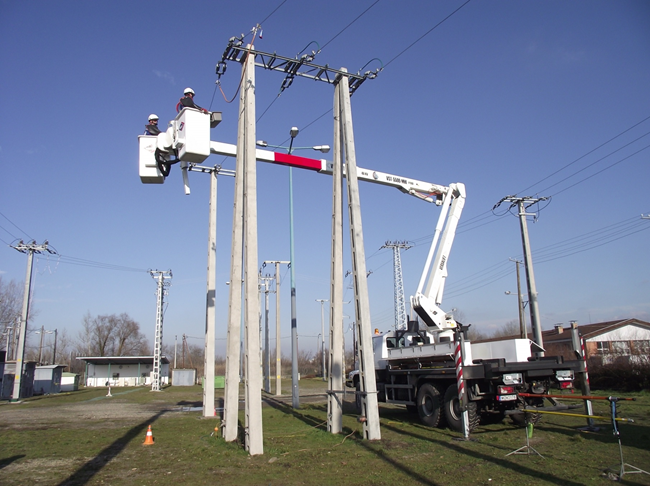
Picture 4 – Live working course in a training centre
More and more activities are performed in the vicinity of the energized grid (e.g. one line is alive while dead line maintenance work is done on the other) or working near or in close proximity to live power lines. As a result of inductive and capacitive coupling, both high voltage and high current may occur in the vicinity of the energized parts. It is essential to provide proper guidelines for these close proximity tasks in all type of grounding systems.
The objective of this WG is to assess and develop management protocols and engineering controls to ensure a safe work environment is provided for live-line and close proximity construction and maintenance on high and medium voltage overhead lines.

CIGRE active Working Groups / Call for experts
Publications
B2 has issued 96 Technical Brochures since 1994. Several Working Groups finished in 2021 and early 2022 and published Technical Brochures, papers in CSE CIGRE Science and Engineering and one CIGRE Green Book. They are:
High temperature Low Sag (HTLS) conductors are now installed regularly by some utilities around the world to increase the capacity of existing overhead lines and/or for other considerations. Electrical, thermal as well as mechanical aspects of HTLS conductors have already been covered in CIGRE Technical Brochures 331, 426, 695 and 763. To make sure that they will perform as expected over the long life of the line in which they are installed, the overhead line designers must be able to predict the behaviour of HTLS conductors with respect to aeolian excitation to avoid conductor failure due to fretting fatigue. Aeolian vibration modelling has already been covered by CIGRE WGs in Electra papers which have been put together in a CIGRE Green Book. Thus, the main objectives of this brochure are:
- To identify the effect of temperature on HTLS conductor self-damping;
- To identify the effect of temperature variations and wind excited vibration cycles on HTLS conductor self-damping;
- To identify a procedure to test HTLS conductor self-damping with the aim of using the measured self-damping data to simulate the HTLS conductor behaviour with respect to aeolian vibrations and design an adequate damping system whenever required;
- To identify the effect of temperature variations combined with vibration cycles on the behaviour of the different types of clamping systems used for HTLS conductor fittings.
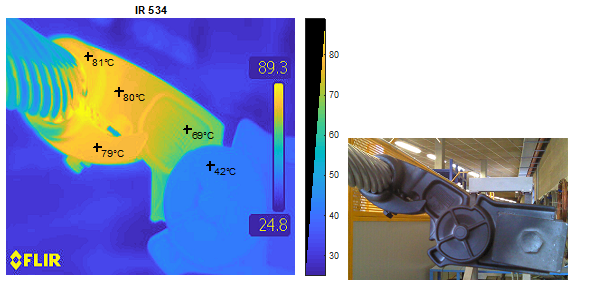
Picture 5 - Figure 4.5 from TB, Temperature distribution – metal to metal bolted clamp on armour rods (ACCC Stockholm)
Tests were performed in laboratories during the preparation of this brochure to evaluate the impact of temperature, thermal cycles and vibration cycles on conductor self-damping.
The compaction of overhead lines in order to reduce their visual and environmental impact can make regulatory approvals easier. It can also allow their construction on narrower rights of way or shared with public transport routes. High voltage direct current (HVDC) lines can provide a high concentration of power and can have fewer “phases” than AC lines, as such they make excellent candidates for compaction. This brochure describes the electrical aspects of compact HVDC lines.
Compaction typically involves reducing the phase (pole) clearances, resulting in increased electric fields, audible noise, and other effects. Managing these effects is the key to the design of a compact DC line. In this brochure compacting is defined as reducing the cross section of a corridor (both the height and width) for a given power transfer requirement.
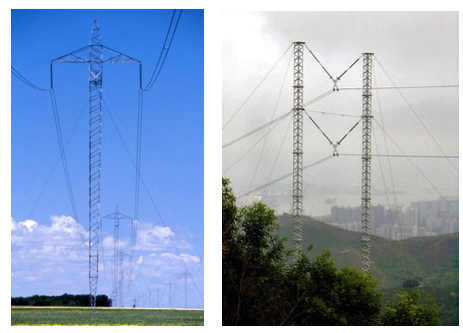
Picture 6 - Typical configurations for bipole DC scheme
In general, HVDC links are designed to transmit large amounts of power over long distances, or to serve as system interconnectors. Both require high reliability and availability. Thus, insulation coordination and live maintenance are covered in detail.
This brochure explains the concept of DC overhead line compaction. Another Working Group (CIGRE TB792) covers the AC compact theory and practice. In AC lines the surge impedance loading, and hence the maximum power flow, can be affected by compaction. For DC power lines, however, increased power flow can only be realised by increasing the current through the conductors and/or increasing line voltage.
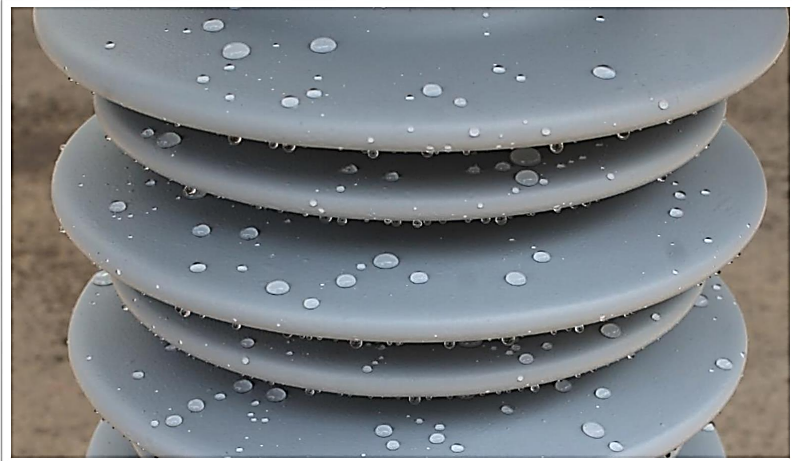
Picture 7 - Example of hydrophobicity on newly RTV (Room Temperature Vulcanizing) coated insulator
The Technical Brochure presents the state of art of Room Temperature Vulcanizing (RTV) insulator coating, as used both to mitigate pollution flashovers on insulators with demonstrated poor service performance and as a viable solution at the design phase itself, with the adoption of factory pre-coated insulators.
As far as coating procedure is concerned, guidelines herein summarize more than 30 years of experience of various manufacturers, service providers and users. In-situ and factory applications (pre-coated insulator applications) are examined, as are various application procedures (brushing, spraying and dipping), automation possibilities and quality control requirements.
Various diagnostic methods to assess coating conditions in service are analysed. Maintenance procedures are also examined. Finally, suggestions for coating specification are summarized and examples of specifications presently adopted for coated insulators are analysed, confirming the urgent need of a reference IEC standard.
The Technical Brochure provides an overview of practical and durable coatings as well as surface engineering techniques to increase the reliability of overhead power network equipment in various environmental conditions.
It also addresses some environmental concerns caused by corona noise and visual aspects of overhead power lines. The main power network features considered are insulators, conductors and ground wires, and transmission line structures.
The following coatings are considered in this TB:
- Anti-icing: conductors, ground wires, insulators
- Anti-noise: conductors and fittings
- Anti-corrosion: metal parts
- Camouflage: general appearance of the line
In order to identify and examine existing coatings and their potential advantages for use in overhead power network equipment for improved reliability under different environmental conditions, a review of the most relevant coatings was carried out. In addition, characterization of coatings, application methods as well as the need for future R&D studies are discussed.
Finally, to test and characterize the performance and durability of anti-icing coatings, several methods, in the absence of appropriate standards, which have been adopted in different laboratories, have been presented and discussed. Although a number of these methods, with some modifications, can be applied for testing these coatings, refinement of some of these techniques, as well as the development of new methods, is required.
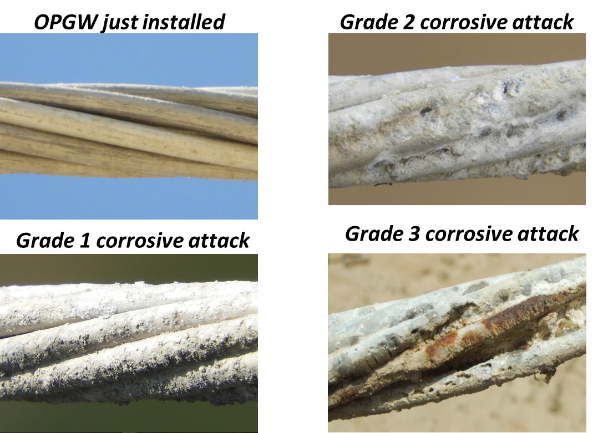
Picture 8 - Photographic patterns used for the evaluation of the OPGW (optical ground wire) without grease or coating in areas of high corrosive aggressiveness.
Live-line maintenance on overhead lines is widely applied worldwide at low, medium and high voltage levels in transmission- and distribution systems because of its technical and economic benefits. Unfortunately, there is not any common frame to define the required acceptance and periodical tests of equipment and their periodicity, so the duration and structure of theoretical and practical training. One of the main aims of this Technical Brochure is to harmonize these essential topics by defining complex and detailed guidelines to guarantee up-to-date knowledge and increase general safety of live-line maintenance at all voltage levels.

Picture 9 - Figure A3 from the TB, Hot stick – flashover during periodical test 100 kV/30 cm (Terna, Italy)
The document provides a general introduction into the topic but also gives a number of individual examples from several nations. The general part introduces definitions and the corresponding international standards, supplemented by individual national requirements.
The first part of the document processes the types of tests and justifies their use. Particular emphasis is placed on the conduct of periodic tests and the requirements for conducting these.
The second part of the document focuses on how the training of workers takes place and what are the basic expectations of the trainees. It also describes the international acceptance of the certificates awarded.
B2 articles in CIGRE Science and Engineering - CSE
CSE is an open electronic Journal, free available for download to everyone, and has three issues per year. It provides high quality papers which are stringently peer reviewed.
- CSE N. 20 February 2021: Development of Innovative Test Procedure for Evaluation of Adhesion of Core-Housing of Composite Insulators: from Root Cause of Failures in Service to Reproducible Test Procedure
- CSE N. 21 June 2021: A numerical procedure for the analysis of the buckling and post-buckling behavior of steel lattice towers in overhead transmission lines
- CSE N. 21 June 2021: Explosively Compressed Connector Failure Mode Requires New Rigorous Inspection Method
- CSE N. 21 June 2021: Development of Innovative Test Procedure for Evaluation of Adhesion of Core-Housing of Composite Insulators
- CSE N. 22 October 2021: A Semi-Autonomous Cost Effective Erection Method for Overhead Line Towers
- CSE N. 22 October 2021: Estimation of ‘wet conductor’ audible corona noise from I-type suspension insulator strings at HVAC overhead power lines
- CSE N. 22 October 2021: Estimation of cumulative loss of strength of fittings for high temperature low sag overhead line conductors over their service life
CIGRE Green books
CIGRE Green Books are reference books for the modern overhead line business. They provide experiences, information about practice, innovations for experts and non-experts. B2 has issued three GBs so far plus one joint Green Book „Electricity Supply Systems of the future“ (all 16 Study Committees contributed, the authors of chapter “Overhead Lines” are from B2).

The CIGRE Green Books are available for purchase on our partner's website Springer.
If you are an Individual CIGRE Member, please contact us to benefit from a 40% discount on your purchase (please indicate your individual active member number and your National Committee in your message).
GB Techniques for Protecting Overhead Lines in Winter Conditions is the newest GB from B2, published in March 2022
Overhead lines are exposed to all kind of weather like wind, ice, snow, and other environmental influences from topography and soil conditions, and, as such, must be designed and protected adequately. Many utilities in cold climate regions have developed and used methods and strategies to reduce ice loads using anti-icing and / or de-icing methods. In general, anti-icing methods are used before or early during ice build-up, while de-icing methods are activated during and sometimes after ice build-up. The book covers both mechanical and electrical methods of ice protection.
Some of the described resources are based on new monitoring methods and can assist engineers in establishing representative levels of ice and snow accretion, insulator pollution and other parameters needed for adequate overhead line dimensioning.
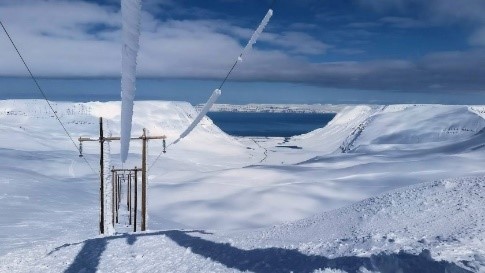
Figure from the book - Rime icing on Bolungarvíkurlína 1, 66 kV, at Hestakleif in the Westfjords, in April 2017
Fundamental aspects and processes of ice adhesion and accretion are presented, as well as the mechanical and thermodynamic behaviour of ice and snow, including the shedding process. A review of the existing de-icing and anti-icing technology showed interesting non-thermal methods, including passive methods, active coatings and devices and mechanical methods.
Advances in materials science and surface engineering in recent years have resulted in the development of a variety of advanced coatings with great potential for application to overhead power network equipment to improve their reliability and quality of service.
The book outlines some deficiencies in existing standard methods to assess the functional properties and durability of advanced coatings for their profitable use.
The book is also a review of CIGRE Technical Brochures 438, 631and 838 and many other CIGRE contributions which touch on the problems of operating overhead lines in winter conditions.

Tutorials, Webinars
Tutorials and webinars were mainly by video systems:
- Inspection and testing of tools, equipment and training for live-line work on overhead lines, Balint Nemeth
- Compact AC line design, Rob Stephen
- State of the art on spacers and spacer dampers used on overhead transmission lines with bundled conductors, Pierre van Dyke
- Glass fibre reinforced polymer composite structures for electrical transmission lines, Janos Toth
- State of the art on sustainability of OHL conductors and fittings - conductor condition assessment, Cecile Rozé
- Glass Fibre Reinforced Composite Structures for Electrical Transmission Lines, Peter Dulhunty
CIGRE Awards
The 2021 CIGRE Technical Council Award went to Mr. Anish ANAND, Representative of India in B2, member in CAG, SAG and Working Groups, contributor to several TBs.
The CIGRE Pioneer e-session Achievement Awards went to Mr. Wolfgang TROPPAUER, B2 Secretary, Austria, Mr. Klemens REICH, Special Reporter PS1, Austria, Mr. Tim CONDON, Special Reporter PS2, Ireland, Mr. Jean-Philippe PARADIS, Special Reporter PS3, Canada for their immense efforts to run the Group Discussion Meetings in 2020 and 2021.
Coming B2 events
2022 August/September Paris Session: 72 full papers have been submitted for the GDM including four papers from NGN. The Preferential Subjects of B2 are as below and let expect interesting discussions.
- PS 1: Challenges & New Solutions in Design and Construction of new OHL
- PS 2: Latest Techniques in Asset Management, Capacity Enhancement, Refurbishment
- PS 3: Environmental and safety aspects from OHL, joint PS with C3
29th Sept – 6th Oct 2023 in Sendai, Japan: B2 Annual meeting and Colloquium “Recent Overhead Transmission Line Technology and Environmental Measures”
